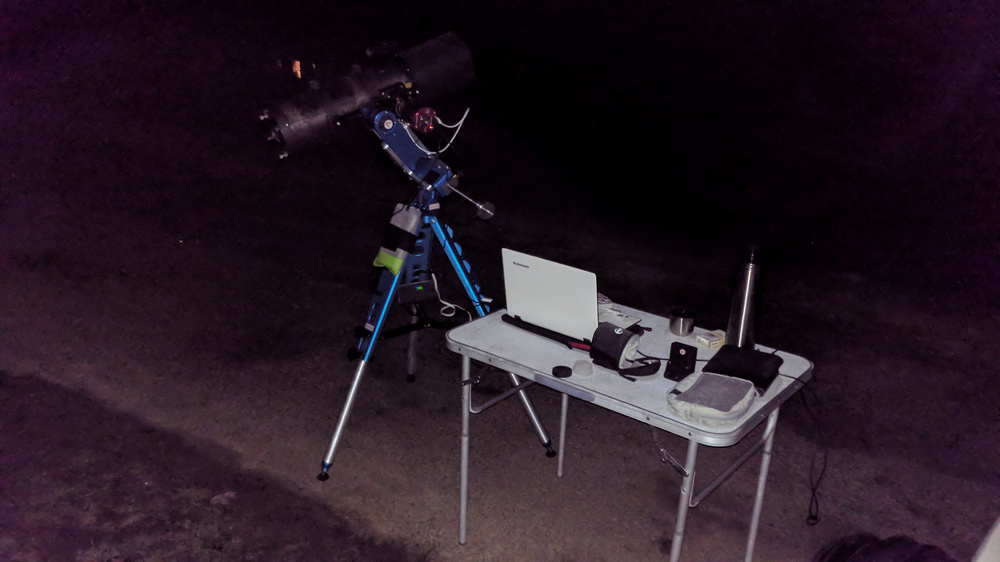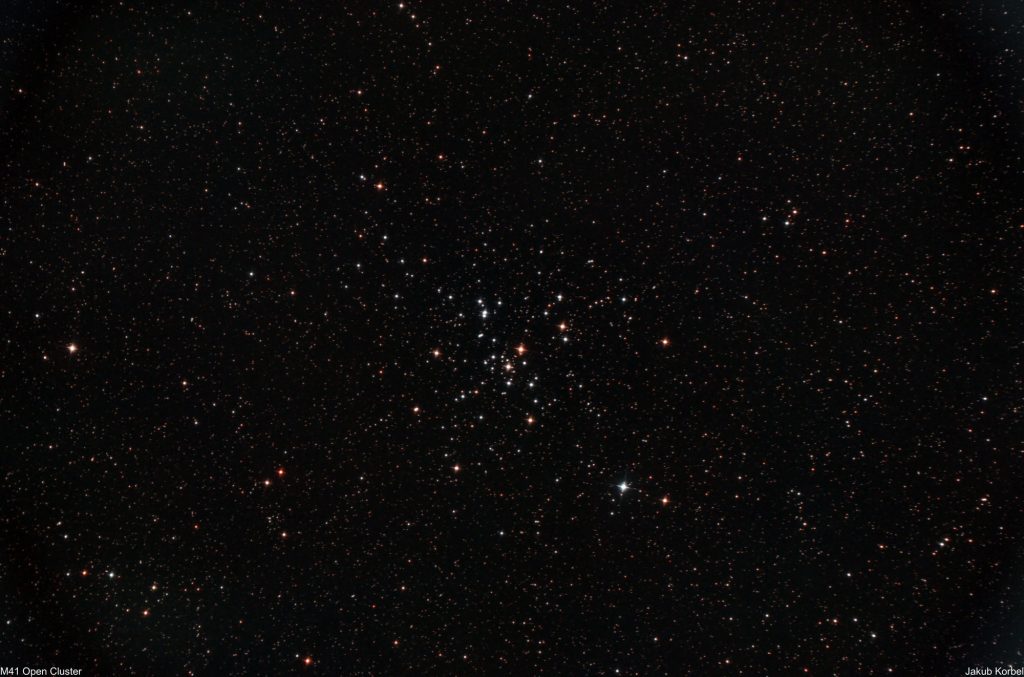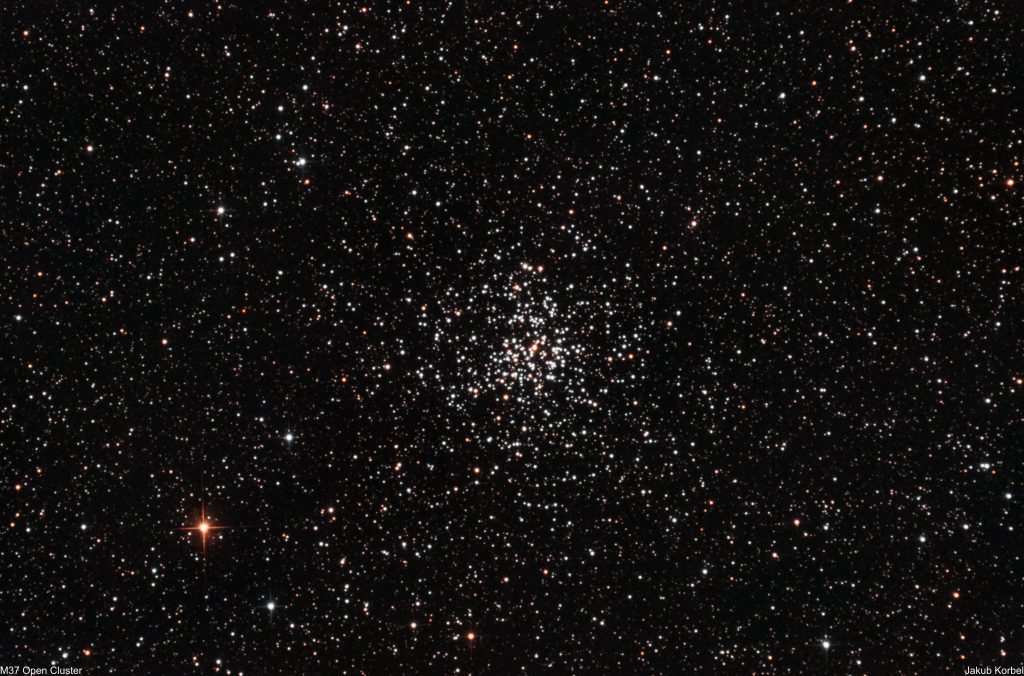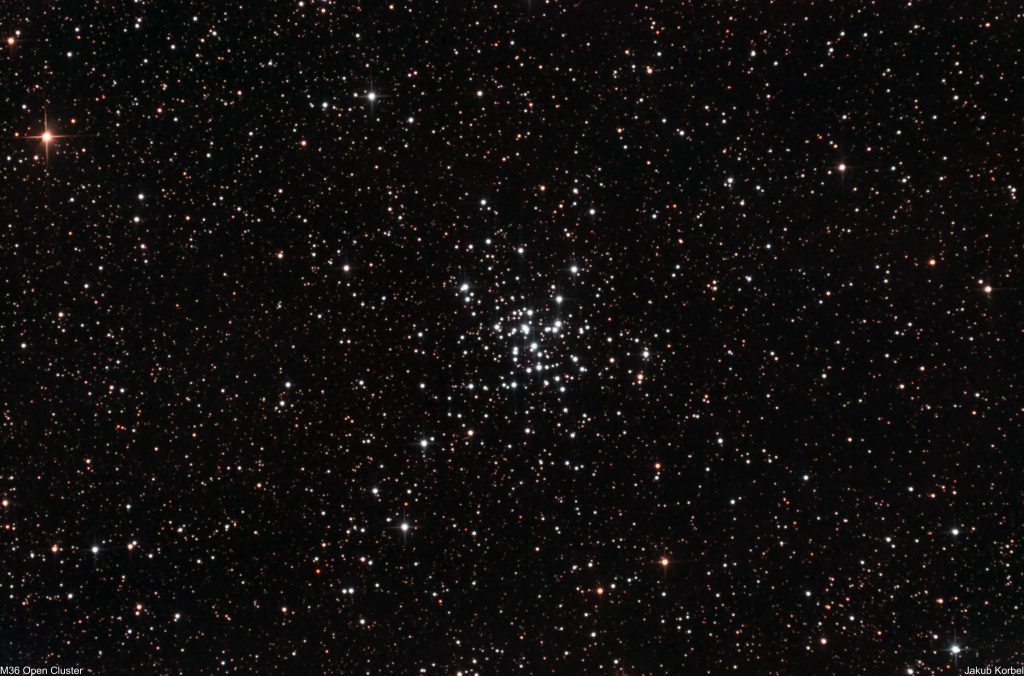Messier 76 is one out of four planetary nebulae in Messier catalogue. It is one of the dimmest objects in this catalogue. The nebula is located in constellation Perseus and it is 2500 light-years away from Earth. M76 was discovered by Pierre Méchain in 1780 and in the same year was catalogued by Charles Messier.
The picture is a stack of 58 pictures, each 180s, which means nearly 3 hours of the integration time. However, the conditions were far from optimal, because the Moon was in first quarter and illuminating the skies.
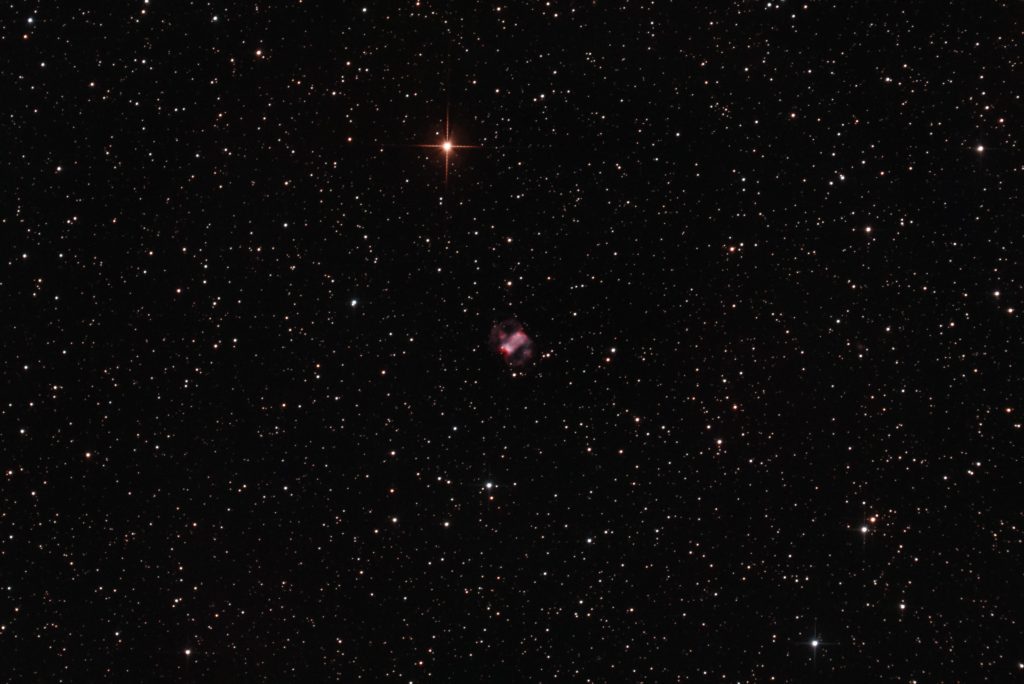
| Telescope | Newton 254/1000 mm |
| Aperture | 254 mm |
| Focal length | 1000 mm |
| Mount | Gemini G53f |
| Autoguiding | ZWO 174MM, TS 60/240 mm |
| Camera | ZWO 071 Pro @-20°C |
| Corrector | Explore Scientific HR coma corrector |
| Filters | Hutech IDAS LPS-D2 |
| Exposure | 58x180s, Gain 94, bin 1x1, |
| Date | 2019-02-14 |

